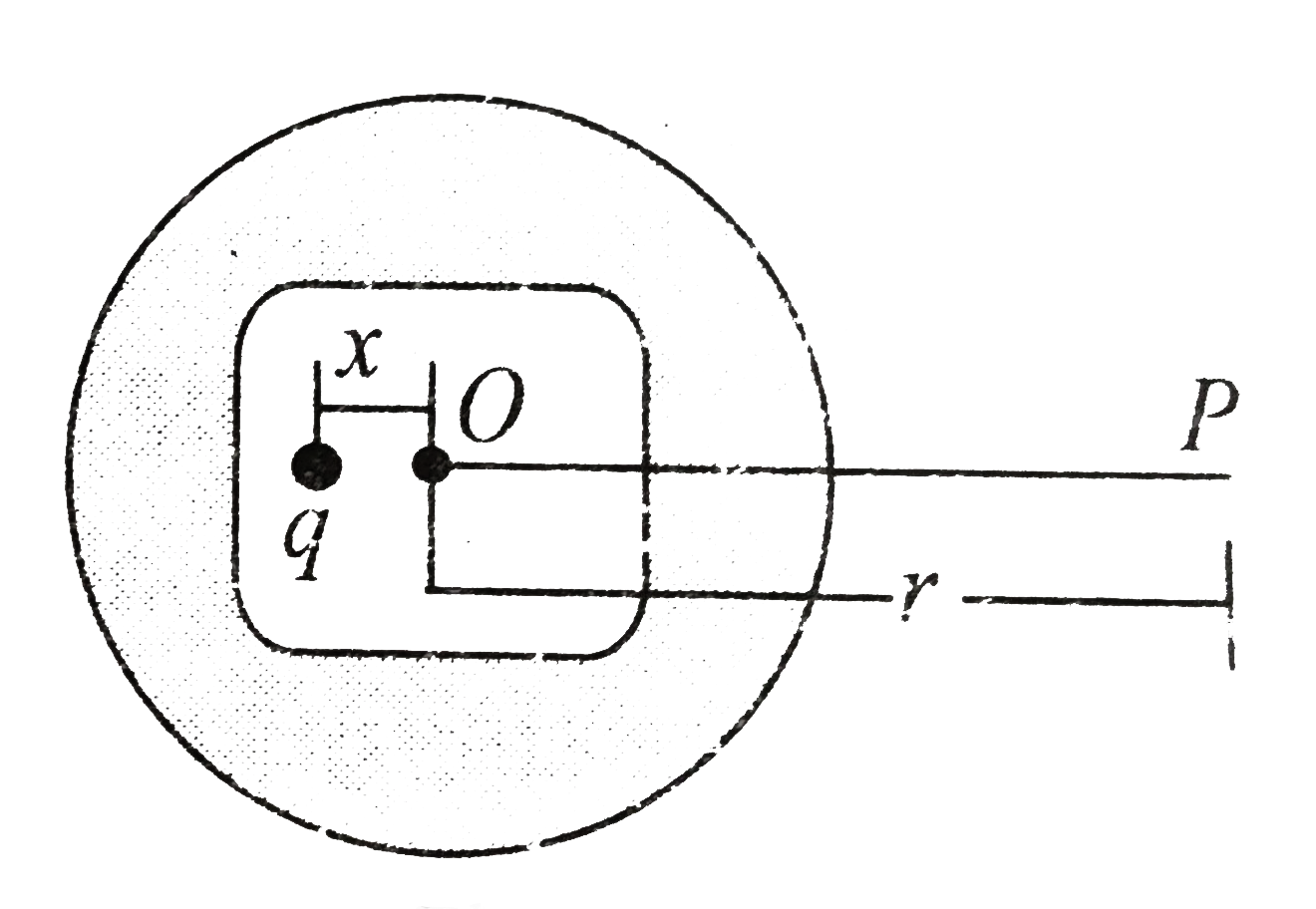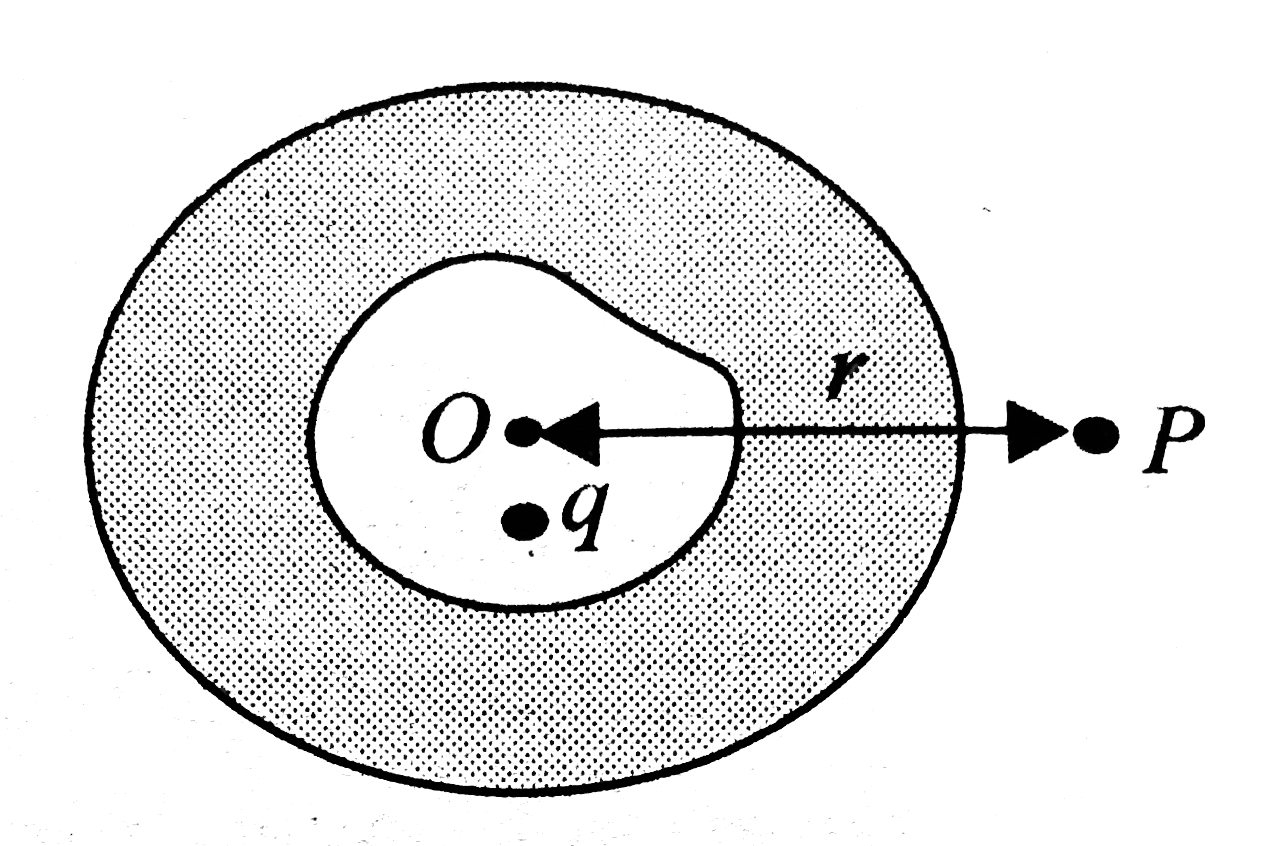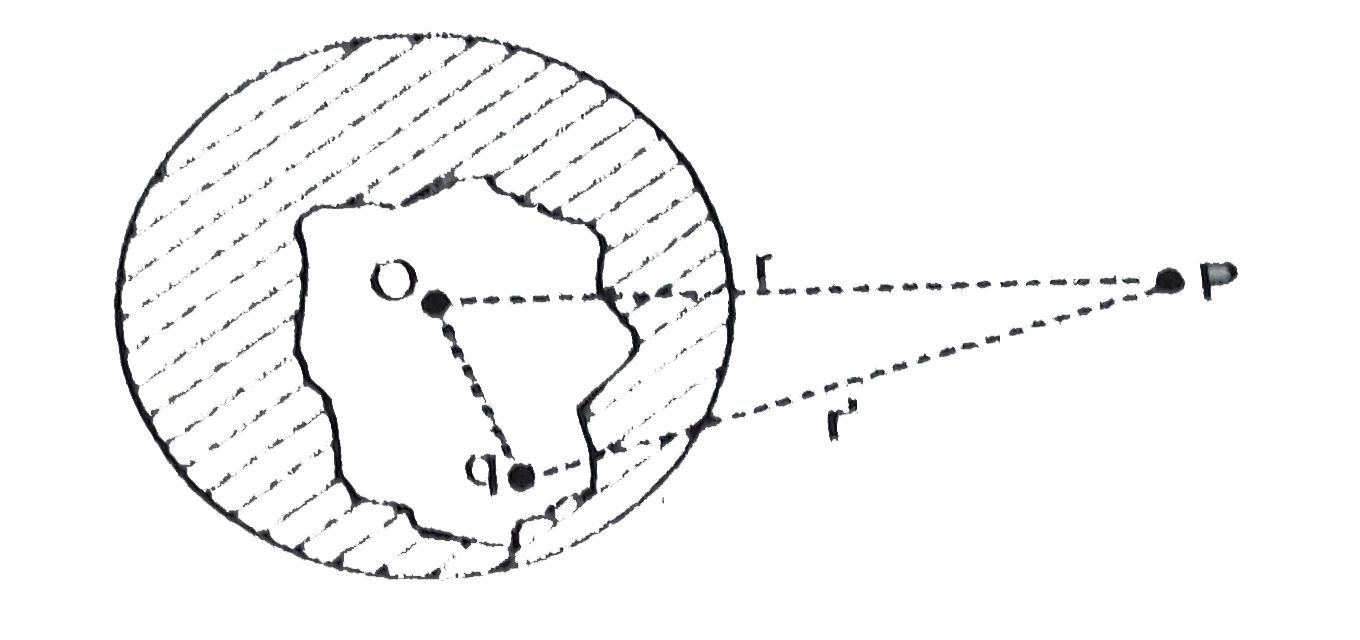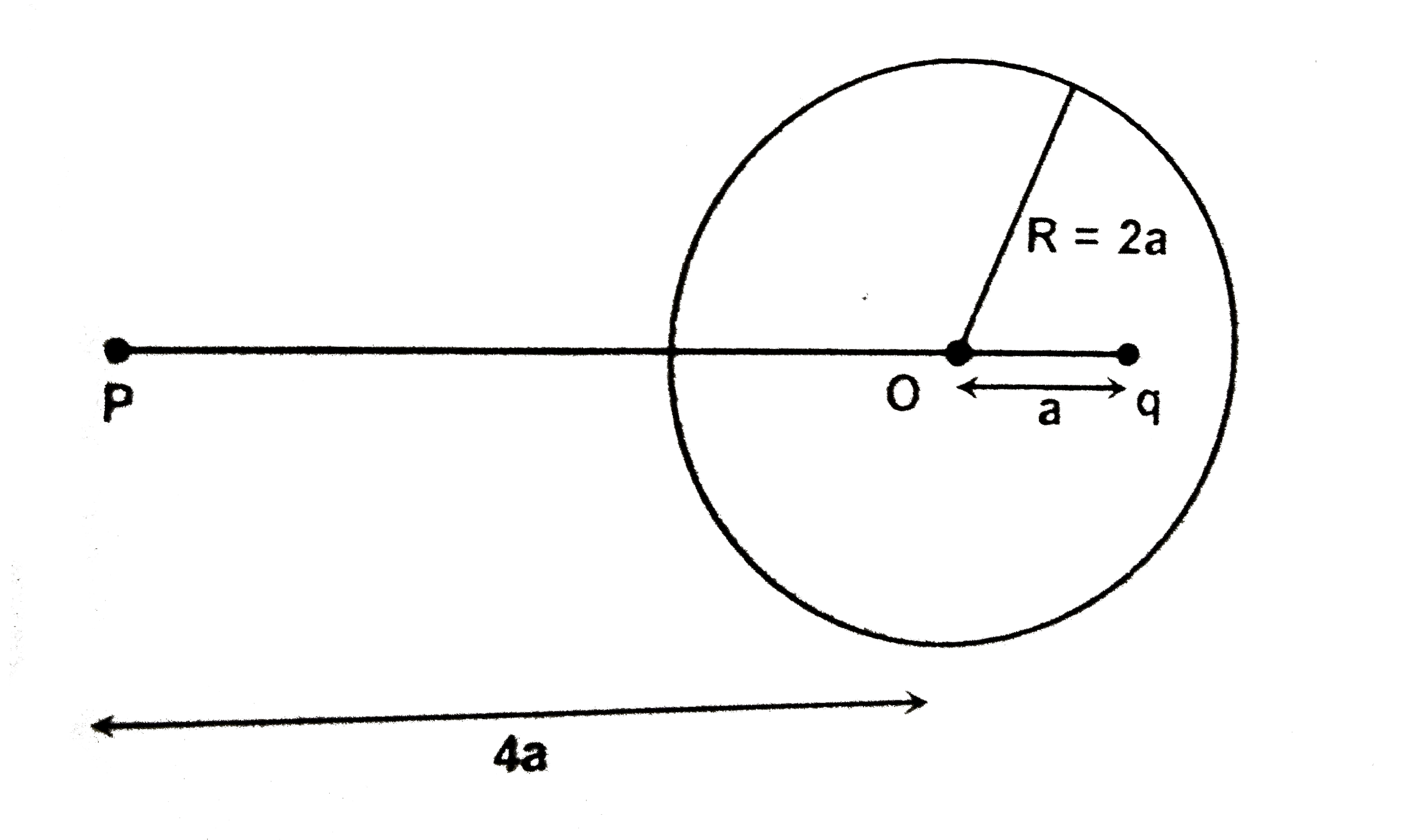A point charge q is placed with in the cavity of an electrically neutral conducting shell whose outer surface has spherical shape. Then,

The potential V at point P lying outside the shell at a distance r from the centre O of the outer surface depends upon the value of x.
potential at P does not depend upon the value of x.
a total charge q will be induced on the outer surface the shell which will be distributed uniformly on the outer surface.
a total charge -q will be induced on the inner surface of the shell which will be distributed nonuniformly on the inner surface.
The correct Answer is:B, C, D
b.,c.,d.
Vp=kqr (independent of x)
Topper's Solved these Questions
- MISCELLANEOUS VOLUME 3BOOK - CENGAGE PHYSICSCHAPTER - MISCELLANEOUS VOLUME 3EXERCISE - Assertion and Reason Type
8 Videos
- MISCELLANEOUS VOLUME 3BOOK - CENGAGE PHYSICSCHAPTER - MISCELLANEOUS VOLUME 3EXERCISE - Comprehension Type
94 Videos
- MISCELLANEOUS VOLUME 3BOOK - CENGAGE PHYSICSCHAPTER - MISCELLANEOUS VOLUME 3EXERCISE - True and False
3 Videos
- MECHANICAL PROPERTIES OF SOLIDSBOOK - CENGAGE PHYSICSCHAPTER - MECHANICAL PROPERTIES OF SOLIDSEXERCISE - Question Bank
4 Videos
- MISCELLANEOUS VOLUME 5BOOK - CENGAGE PHYSICSCHAPTER - MISCELLANEOUS VOLUME 5EXERCISE - Integer
12 Videos
Similar Questions
A point charge +Q is placed at the centre of an uncharged spherical conducting shell of inner radius a and outer radius b.
i. Find the electric field for r<a.
ii. What is the magnitude and sigh of the induced charge q' on the inner shell surface?
iii. What is the electric field at points r>b?
iv. What id the surface charge on the outer surface of the conductor?
View SolutionA point charge +Q is placed in the vicinity of a conducting surface. Draw the electric field lines between the surface and the charge.
View Solution
Knowledge Check
The point charge q is within the cavity of an electrically neutral conducting shell whose outer surface has spherical shape. Find the potential V at a point P lying outside the shell at distance r from the center O of the outer sphere.
 .AV=14πε0qrBV=12πε0qrCV=1πε0qrDV=34πε0qr
.AV=14πε0qrBV=12πε0qrCV=1πε0qrDV=34πε0qrA point charge 'q' is within an electrically neutral conducting shell whose outer surface is a sphere of radius R. The centre of outer surface is at O. Consider a point P outside the conductor as shown in the figure. The magnitude of electric field at P
 Adue to charge induceed on inner surface of the conductor is zeroBdue to charge induced on inner surface of the conductor is kq(r')2Cdue to charge induced on outer surface of the conductor is kqr2Ddue to charge induced on surface of the conductor is kqr2
Adue to charge induceed on inner surface of the conductor is zeroBdue to charge induced on inner surface of the conductor is kq(r')2Cdue to charge induced on outer surface of the conductor is kqr2Ddue to charge induced on surface of the conductor is kqr2A charge Q is placed at the centre of a spherical conducting shell. Choose the correct option.
AOnly −Q will appear on its inner surfaceBOnly +Q will appear on its outer surfaceCA charge −Q will appear on its surface and +Q on its outer surfaceDA charge +Q will appear on its inner surface and −Q on its outer surface
A charge q is placed at a distance of 2R from the centre of a spherical conducting shell of radius R. What is electrical potential, due to charges induced on the shell, at a point which is farthest from the point charge ?
View SolutionA point charges + Q is placed in the vicinity of a conducting surface Draw. The electric field lines between the surface and the charges.
View SolutionA conducting spherical shell having inner radius a and outer radius b carries a net charge Q. If a point charge q is placed at the centre of this shell, then the surface charge density on the outer surface of the shell is given as:
View SolutionA point charge +q is placed at the centre of a conducting spherical shell of inner radius a and outer radius b. Find the charge appearing on the inner and outer surface of the shell.
View Solution
A point charge q'q is placed at distance 'a' from the centre of an uncharged thin spherical conducting shell of radius R=2a. A point 'P' is located at a distance 4a from the centre of the conducting shell as shown. The electric potential due to induced charge on the inner surface of the conducting shell at point 'P' is
View Solution
